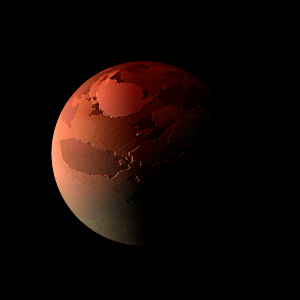|
|
Space Astro
|
Info for exoplanet "Yeryong'gou"
| Scientific (actual) data |
|---|
| Name | TOI-1680 b |
| Planet status | Confirmed |
| Planet mass | 0.01001 |
| Radius | 0.13079 |
| Orbital period | 4.8026 |
| Semi major axis | 0.03144 |
| Inclination | 89.58 |
| Discovered | 2023 |
| Updated | 2023-07-12 |
| Tzero tr | 2459010 |
| Impact parameter | 0.23 |
| Publication | Published in a refereed paper |
| Detection type | Primary Transit |
| Mass measurement type | Theoretical |
| Radius measurement type | Primary Transit |
| Star name | TOI-1680 |
| Right ascension | 292.31° |
| Declination | 65.97° |
| Mag v | 14.5 |
| Star mass | 0.18 |
| Star radius | 0.213 |
| Star sp type | M4.5 |
| Star temperature | 3224 |
| Wikipedia article | TOI-1680 b |
Back
| |
| Fictional info (?) |
|---|
| Suggested name | Yeryong'gou |
| Planet type | Hot planet |
|
Surface mostly known for its dangerous and medieval carnivores, the "Wanlyo-xyou", that feed in the forest while devouring another species called Fanqwen-w The Wanlyo-xyou are closely related to the Chwank Wat and have wings and vary in size from 80 to 140 mm. Most Wanlyo-xyou are able to endure temperatures from -90 to -50°C and even the high radiation level which is common on this planet. |
| Estimated population | 210000 |
| Atmosphere | Carbon dioxide | 82% |
| Oxygen | 12% |
| Water | 4.9% |
| Methane | 0.045% |
| Atmospheric pressure | 3 bar |
 |
| No known satellites |
| Google search for Yeryong'gou |
|
Website by Joachim Michaelis
|
|
|
|